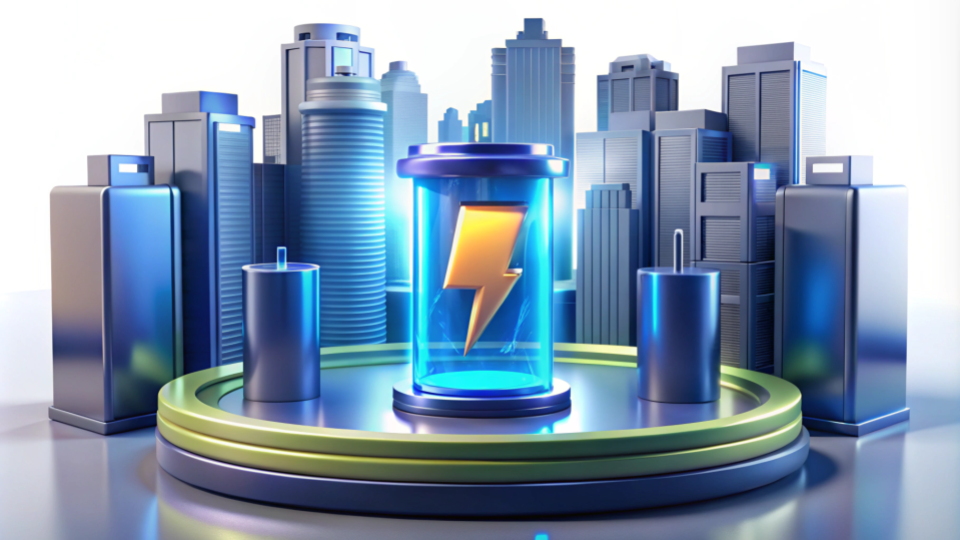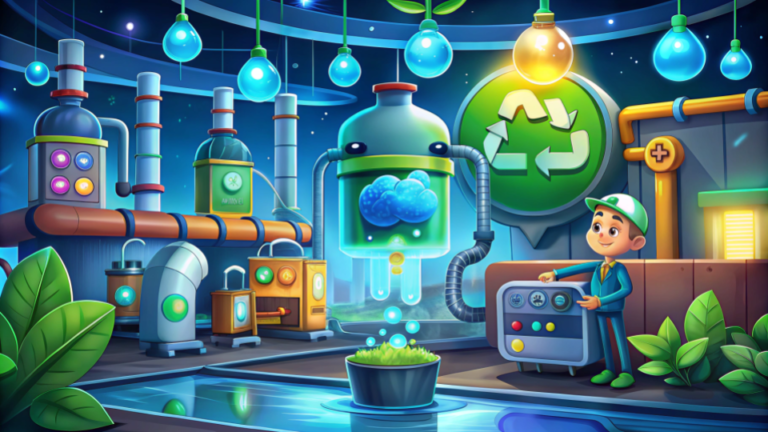Clean Electric : Could This Startup’s Tech Be the Answer to Exploding EV Batteries?

Clean Electric is addressing some of the most critical issues in EV batteries. Founded in 2016 by IIT-BHU alumni Akash Gupta, Abhinav Roy, and Ankit Joshi, this Pune-based startup is on a mission to supercharge the electric vehicle (EV) world with efficient, durable, and high-performance battery solutions. Operating out of Pune, India, Clean Electric aims to solve critical challenges in the EV sector, focusing on producing lithium-ion batteries that offer quick charging and long-lasting power for two- and three-wheelers, and soon, four-wheelers as well. Clean Electric’s innovative battery technology includes liquid-cooled lithium-ion options designed for two- to four-wheeled EVs. (Clean Electric)
Clean Electric’s battery packs stand out for their fast-charging abilities, allowing two-wheeler batteries to charge within 10-12 minutes, three-wheeler batteries in just 30-60 minutes and four-wheeler battery in 68 minutes. The company is also exploring battery technology for larger electric vehicles, planning to release packs for more four-wheelers and heavy-duty EVs by 2025.
Clean Electric has already drawn attention and investment, securing funding from major players like Info Edge and Pi Ventures. They have attracted partnerships with over a dozen EV original equipment manufacturers (OEMs). Clean Electric is set to launch more battery packs for four-wheelers and heavy vehicles by early 2025, aiming to support even heavier electric transport.
Meet the Founders : Charged Up and Ready to Roll
Clean Electric’s journey began with three ambitious engineers who dreamed of building a hardware-driven tech company in India’s EV sector. Akash Gupta, Abhinav Roy, and Ankit Joshi, all graduates of IIT joined forces in 2020 to launch Clean Electric and create safe, fast-charging, and durable batteries that cater to India’s booming electric vehicle market
Akash Gupta leads as the CEO, bringing a strong background in engineering and a drive for innovation in green technology. With a Bachelor’s in Mining and Mineral Engineering from IIT (BHU), Varanasi, Akash has a deep-rooted interest in automotive engineering and sustainability. Before Clean Electric, he worked at JSW Energy and JSW Steel in EV infrastructure, battery and powertrain development, and strategic M&A projects. His earlier college level projects, such as the Shell Eco-Marathon and SAE Baja, reflect his commitment to building fuel-efficient and sustainable vehicle technology. (Akash Gupta)
Abhinav Roy, the company’s CTO, handles the technical backbone of Clean Electric’s products. His expertise in mechanical and embedded software engineering has been built through roles at companies like GreyOrange, Spinny, and Tata Steel, where he developed automated diagnostic systems, packet dimensioning, and vision-based code-reading systems. He is also a graduate of the Indian Institute of Technology (BHU), Varanasi, with a B.Tech in Mechanical Engineering. Abhinav is skilled in ANSYS and mechanical design, and he has developed patents in EV battery and paper bag manufacturing systems. (Abhinav Roy)
As for Ankit Joshi, he serves as Chief Product Officer (CPO), managing product strategy and ensuring Clean Electric’s offerings stay ahead in the market. Ankit also has a strong engineering background, with a Master’s in Energy Engineering from IIT Mandi and a Bachelor’s in Mechanical Engineering from Rajasthan Technical University. His earlier projects include designing an electric go-kart for Eco-kart events and publishing papers on regenerative braking systems and torque vectoring differential systems for EVs. (Ankit Joshi)
The founding trio’s breakthrough came when they identified a major gap in EV battery efficiency and safety. Recognizing that the slow charge time and overheating issues were a deterrent for potential EV owners, they developed a proprietary liquid-cooling system. This system keeps battery temperatures stable during fast charging, extending battery life and efficiency. Through relentless research, they turned their prototype into a commercial product that’s now utilized by numerous EV manufacturers across India.
Global EV Battery Market : The Rise of EV Batteries Worldwide
The global electric vehicle (EV) battery market is rapidly growing, driven by increasing EV adoption and technological advancements. As of 2024, the market was valued at approximately $165.1 billion, and it’s expected to reach around $265.1 billion by 2029. This growth represents a compound annual growth rate (CAGR) of about 9.93%. Major factors propelling this growth include rising environmental concerns, the shift towards sustainable transportation, and significant governmental support for EV initiatives globally. (Mordor Intelligence)
In terms of geographical influence, Asia-Pacific, particularly China, dominates the EV battery market, accounting for about three-quarters of the global market share of all lithium ion batteries. China’s lead is due to its extensive production capabilities and low labor costs, which allow for mass production at competitive prices. Europe and North America follow closely, driven by supportive policies and investment in local battery manufacturing to reduce dependence on Asian imports. (Fortune Business Insights)
Overall, the EV battery market’s strong growth trajectory is set to continue as battery technologies evolve, driven by both policy mandates and consumer demand for greener vehicles. This growth creates a favorable environment for innovation and competition among battery manufacturers, a trend that benefits startups like Clean Electric, which aim to bring advanced solutions to this expanding sector.
Battery Basics: Clean Electric’s Mission to Power Up the EV Market
Clean Electric’s mission is to accelerate India’s shift to electric vehicles (EVs) by creating efficient, fast-charging, and sustainable battery solutions. They aim to solve critical issues that limit EV adoption, such as long charging times by which they are helping India take a leap toward green mobility without the traditional challenges faced by EV users. (About Clean Electric)
Vision and Goals
Clean Electric envisions an India where EVs dominate the roads, supported by accessible, high-performance batteries that charge quickly and safely. They aim to reduce the charging time for EV batteries to around 10-15 minutes, which would match the convenience of refueling gas-powered vehicles. The company also focuses on ensuring that its battery technology is scalable and sustainable for future expansion into commercial vehicles and renewable energy storage.
Problems Addressed
The team at Clean Electric is committed to solving two main challenges in the EV industry: slow charging speeds and battery overheating. To tackle these, they developed a unique liquid-cooling technology that keeps batteries cool and efficient, even under rapid charging conditions. This approach reduces the risk of overheating, which has been a safety concern for EV batteries. Moreover, their fast-charging batteries address the inconvenience that comes with longer charging times, making EVs more practical and appealing to the average user.
Business Model
Clean Electric operates through partnerships with EV manufacturers (OEMs), supplying advanced batteries specifically designed for two- and three-wheelers, as well as larger commercial vehicles. They focus on B2B sales, collaborating with OEMs and other EV companies, such as Bounce Infinity, to integrate their battery technology across different vehicle platforms. Clean Electric also plans to expand into energy storage solutions for grid stabilization, where their battery packs can store renewable energy for distribution during peak demand times.
Fully Charged: Exploring Clean Electric’s Power-Packed Product Lineup
Clean Electric is revolutionizing the energy storage landscape with products that cater to everything from small two-wheeler batteries to large, stationary energy storage systems. With cutting-edge technology, Clean Electric’s products prioritize safety, efficiency, and convenience, making them ideal for a wide range of applications. Here’s an in-depth look at their complete product range and features. (Products)
MACH Series: Reliable and Fast-Charging Batteries
MACH 123
- Energy Capacity: 12.3 kWh
- Voltage: 307.2 V
- Operating Voltage: 268.8 V to 340.8 V
- Charging Speed: 10–100% in just 10 minutes
- Durability: Supports up to 3600 cycles with a 3-year warranty
- Key Features: Equipped with direct contact active liquid cooling for efficient heat management, fireproof technology for safety, and integrated telematics with 4G connectivity. This model is ideal for applications that demand high energy capacity and fast charging.
MACH 020
- Energy Capacity: 2.1 kWh
- Voltage: 48 V
- Operating Voltage: 45 V to 53.2 V
- Charging Speed: 10–90% in 12 minutes
- Durability: 1500 cycles with a 3-year warranty
- Key Features: Suitable for two-wheelers, this model also features direct liquid cooling, super-safe fireproof technology, and IP67-rated protection. It’s optimized for small vehicle applications with rapid recharge capabilities.
FLO Series: Powerful and Efficient for Larger Applications
FLO 320
- Energy Capacity: 31.6 kWh
- Voltage: 76.8 V
- Operating Voltage: 72 V to 87.6 V
- Charging Speed: 20–80% in 68 minutes
- Durability: 3000 cycles with a 3-year warranty
- Key Features: Designed for four-wheelers, this model incorporates a cell-to-pack architecture with 82% efficiency by weight, super-safe fireproof technology, and a cost-effective lithium iron phosphate (LFP) chemistry. It also includes telematics with 4G for seamless connectivity.
FLO 115
- Energy Capacity: 11.5 kWh
- Voltage: 76.8 V
- Operating Voltage: 67.2 V to 86.4 V
- Charging Speed: 10–100% in 30 minutes
- Durability: 3000 cycles with a 3-year warranty
- Key Features: Ideal for three-wheeler applications, the FLO 115 combines direct liquid cooling, fireproof safety measures, and efficient LFP chemistry for cost savings.
FLO 105
- Energy Capacity: 10.5 kWh
- Voltage: 51.2 V
- Operating Voltage: 48 V to 58.4 V
- Charging Speed: 0–100% in 60 minutes
- Durability: 2500 cycles with a 3-year warranty
- Key Features: Integrated cell-to-pack design, IP68-rated for extra protection, and optimized for three-wheeler vehicles. The FLO 105 is equipped with telematics, making it ideal for connected fleets.
FLO 051
- Energy Capacity: 5.1 kWh
- Voltage: 51.2 V
- Operating Voltage: 48 V to 58.4 V
- Charging Speed: 0–100% in 60 minutes
- Durability: 2500 cycles with a 3-year warranty
- Key Features: With cost-effective LFP chemistry, this model is suitable for three-wheelers. It includes fireproof technology and telematics with 4G connectivity.
INSTA Series: Compact, Swappable, and Certified Solutions
INSTA 240
- Energy Capacity: 2.4 kWh
- Voltage: 61.2 V
- Operating Voltage: 42.5 V to 71.4 V
- Charging Speed: 0–100% in 120 minutes
- Durability: 1200 cycles with a 3-year warranty
- Key Features: AIS 156 certified, compact, portable, and swappable. The INSTA 240 is fully fireproof and safe from thermal runaway, making it perfect for two-wheelers that require flexible battery solutions.
INSTA 250
- Energy Capacity: 2.5 kWh
- Voltage: 50 V
- Operating Voltage: 42 V to 58 V
- Charging Speed: 0–100% in 120 minutes
- Durability: 1000 cycles with a 3-year warranty
- Key Features: This model is also AIS 156 certified and designed to be compact, swappable, and portable, offering the same safety and connectivity as the INSTA 240 for seamless integration in small vehicles.
Key Features Across the Product Line
All Clean Electric products share several advanced features that make them industry leaders in energy storage solutions:
- Fireproof Technology: Each product incorporates fireproof technology, minimizing risks associated with overheating or potential failures.
- Direct Contact Active Liquid Cooling: This cooling method ensures optimal thermal management, prolonging battery life and performance.
- 4G Telematics and Connectivity: With integrated telematics, these batteries are easily monitored and connected, enhancing fleet management.
- Long Cycle Life and Durability: Clean Electric products offer between 1000 to 3600 cycles, providing reliability and long-term usage backed by up to a 3-year warranty.
Cooling Under Pressure: The Tech That Keeps Clean Electric Running
Clean Electric incorporates advanced technologies to optimize battery performance, safety, and efficiency in electric vehicles. Their proprietary solutions, trademarked as 0Kelvin, utilize a combination of Liquid Immersion Cooling (LIC), Smart Temperature Modulation (STM), and the Hive Battery Intelligence Platform to address core EV battery challenges.
Clean Electric’s 0Kelvin technology is a breakthrough in cell-to-pack, chemistry-agnostic battery management. This innovative system dynamically adapts to the battery’s state—whether charging, discharging, or idling—to meticulously control thermal conditions, ensuring optimal performance and safety. (0Kelvin)
Key Components of 0Kelvin
- Liquid Immersion Cooling (LIC)
The Liquid Immersion Cooling system submerges each battery cell in a non-flammable dielectric coolant, ensuring even temperature distribution. This prevents hotspots and mitigates the risk of thermal runaway, significantly enhancing battery safety. LIC also prolongs battery life by maintaining uniform aging across all cells, allowing over 3,000 charge cycles without degradation in performance. (LIC)
- Smart Temperature Modulation (STM)
Smart Temperature Modulation uses an intelligent algorithm to dynamically adjust charging rates based on real-time battery parameters. This technology prevents lithium plating during fast charging, which can damage the battery over time. STM enables rapid charging, achieving 0-95% charge in just 19 minutes, while maintaining homogeneous temperature control, which supports both battery efficiency and longevity. (STM)
Hive Battery Intelligence Platform
Hive is Clean Electric’s Battery Intelligence Platform that turns each battery into a data powerhouse, collecting around 300,000 data points daily. This data enables predictive maintenance, ensuring optimal battery health. With GPS tracking, Hive offers real-time location tracking for fleet management and theft protection, allowing remote immobilization of batteries if theft is suspected. Hive also provides fleet operators with detailed dashboards to monitor battery performance and make data-driven decisions, optimizing overall fleet efficiency. (Hive)
Teamwork Makes the Charge Work : The Allies Plugging into This Mission
Clean Electric is building impactful partnerships to advance its mission of sustainable mobility. Their clients include key industry players such as Liger Mobility, Enigma, RunR and Bounce Infinity.
Bounce Infinity Collaboration
One of Clean Electric’s significant collaborations is with Bounce Infinity, a leader in India’s electric scooter market. Together, they launched the Bounce Infinity E1, the first electric scooter in India to feature a liquid-cooled portable battery. This technology enables users to charge the battery at any standard household socket, eliminating the need for specialized charging stations. The Bounce Infinity E1 offers an extended range of over 100 km and can charge up to 80% in just 45-50 minutes, meeting consumer demand for both convenience and efficiency. (Economic Times)
RunR Mobility Partnership
Clean Electric has also partnered with RunR Mobility, a rising EV startup focusing on affordable and safe e-scooters for the Indian market. RunR’s flagship model, the RunR HS EV, incorporates Clean Electric’s liquid immersion cooling and smart temperature modulation (STM) technologies. This partnership ensures optimal battery performance and safety, positioning RunR as a trusted provider of high-speed, indigenous EVs in India. Together, Clean Electric and RunR Mobility are expanding dealership networks, bringing accessible EV options closer to consumers across India. (Auto EV Times)
Funding Milestones : Investors Bet Big on the Next Big Charge
Clean Electric has attracted significant investment, strengthening its position as an innovative force in the EV battery market. Since its inception, the company has raised a total of $8.35 million across four rounds. (Tracxn)
November 18, 2021 – Angel Round
In November 2021, Clean Electric secured its first angel investment of $63.9K, valuing the company at $1.5 million. This initial funding round, led by angel investors Upendra Deglurkar, Saurabh Chandra, and Nagbhushan Gubbi, helped the company set the foundation for its battery innovation efforts. The company generated $12.4K in revenue this year.
June 2, 2022 – Seed Round
Clean Electric raised an additional $90K in June 2022, which pushed its valuation to $2.4 million. This round was led by institutional investor iCreate, with corporate backing from Sarcha Advisors and angel investor Varun Shahani. The company’s revenue grew to $25K.
October 28, 2022 – Seed Round
In a significant leap, Clean Electric raised $2.2 million in a second seed round, boosting its valuation to $7.9 million. Major investors included Kalaari Capital, Climate Angels, 7Square Ventures, and LV Angel Fund. Corporate support came from LetsVenture and ciie.com. By this stage, Clean Electric’s revenue had grown to $43.5K.
August 30, 2024 – Series A Round
Clean Electric’s latest funding, a Series A round, raised $6 million from institutional investors like pi Ventures, Lok Capital, and Kalaari Capital. Corporate investors included Info Edge and Rama Advisors, with angel investment from Amit Kumar. Vaish Associates facilitated the round.
Revenue Growth
For the past few years, Clean Electric’s revenue shows a clear upward trend, reflecting its expanding footprint in the EV industry. The revenue rose from $22,000 in FY 2021-22 to $72,900 in FY 2022-23.
The Spark Continues: Get Inspired by Clean Electric
Clean Electric is at the forefront of EV battery innovation, focusing on technologies that address critical industry challenges like overheating, limited range, and long charging times. The company’s flagship technology, known as 0Kelvin, integrates Liquid Immersion Cooling (LIC) and Smart Temperature Modulation (STM) to ensure batteries remain cool and efficient even under rapid charging. This approach minimizes heat buildup, which enhances safety and extends battery life.
Clean Electric’s products cater to a wide array of EV applications, from two-wheelers to commercial electric vehicles. Their battery packs are specifically designed for India’s demanding climate and infrastructure, which often challenge traditional air-cooled battery systems. By offering a durable, high-performance alternative, Clean Electric makes EVs more practical for everyday users, contributing to India’s shift towards sustainable transportation.
If you’re an aspiring entrepreneur or tech enthusiast, Clean Electric’s story is a testament to the power of innovation. Use it as inspiration to pursue your own ideas, make an impact, and perhaps even contribute to a more sustainable future. For more inspiring stories and insights on groundbreaking companies, check out other articles on Venture Kites. Each article dives into the world of exciting startups that are pushing boundaries.
At a Glance with DORK Company

Dive In with Venture Kites
Lessons From Clean Electric
Prioritize Innovation in Core Technology
The Lesson & Why it Matters: Focusing on core technology can give you a competitive edge. By innovating in essential areas, companies can solve critical problems in their industry.
Implementation: Identify the pain points in your field and focus on solving them with advanced technology or unique approaches.
How Clean Electric Implements it: Clean Electric prioritized thermal management by creating the 0Kelvin cooling system, setting them apart in the EV battery market.
Adapt Solutions to Local Market Needs
The Lesson & Why it Matters: Tailoring solutions to local challenges enhances market acceptance and customer satisfaction.
Implementation: Study regional issues and modify your product or service accordingly.
How Clean Electric Implements it: Clean Electric designed its battery systems to perform well in India’s hot climate, meeting the unique demands of the local EV market.
Form Strategic Partnerships
The Lesson & Why it Matters: Collaborations can accelerate growth and open new market opportunities.
Implementation: Seek partnerships that align with your mission and amplify your resources.
How Clean Electric Implements it: Clean Electric’s partnerships with Bounce Infinity and RunR Mobility helped them reach more customers and enhance their brand presence.
Build a Strong Brand Identity
The Lesson & Why it Matters: A strong brand identity builds customer loyalty and differentiates you from competitors.
Implementation: Use consistent messaging that reflects your company’s mission and values.
How Clean Electric Implements it: Clean Electric positions itself as a leader in safe, high-performance EV battery solutions, creating a trustworthy brand image.
Use Data to Improve Product Life and Safety
The Lesson & Why it Matters: Data-driven insights improve product reliability and customer satisfaction by predicting maintenance needs and preventing issues.
Implementation: Incorporate sensors and data analytics in products to track performance and health indicators in real time.
How Clean Electric Implements it: The Hive Battery Intelligence Platform collects and analyzes extensive data daily, offering predictive maintenance and performance insights.
Youtube Shorts
Author Details
Creative Head – Mrs. Shemi K Kandoth
Content By Dork Company
Art By Dork Company
Instagram Feed
X (Twitter) Feed
🚀 @cleanelectric_ is pushing the boundaries of electric mobility with fast-charging, long-lasting EV batteries! 🔋🌱
— Venture Kites (@VentureKites) November 12, 2024
Let’s dive into how they’re solving critical EV challenges and accelerating India’s green transition 👇👇 #CleanEnergy #EVBattery #ElectricVehicles












